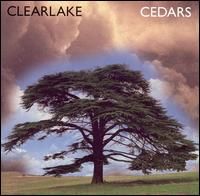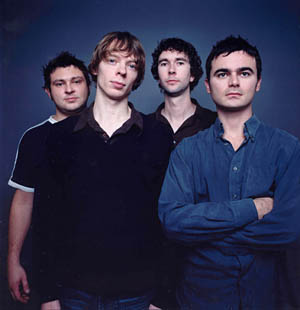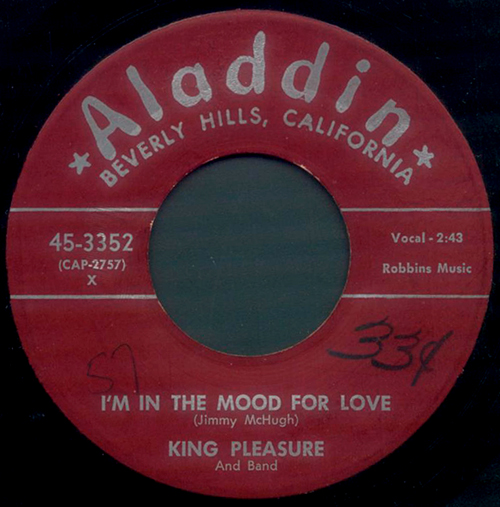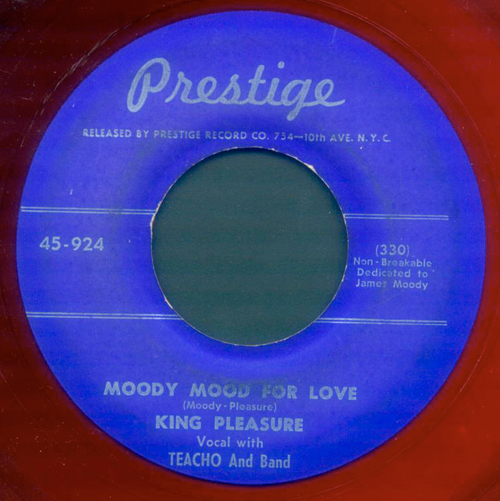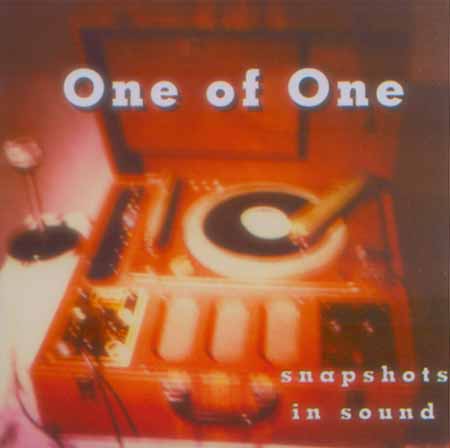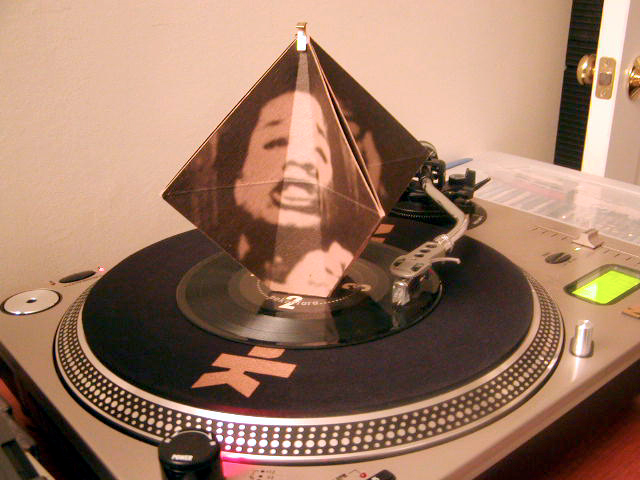As I was driving to work this morning, I was falling in love all over again with Allison Shaw, vocalist of The Cranes. As I’ve pointed out to so many friends, everytime I hear The Cranes, the most unlikely association pops up, the song featured in today’s Lost 45s. I fiorst published this in my other on-line music thing, the now defunct Moonlight Radio, back in 2006. But just in case you missed it…

[audio:http://www.paulcollegio.net/juke/juke0609/45.mp3]
The article below is excerpted from a fan’s tribute website, and I have to say, I agree with most of it. This is a captivating song, and, I think, influential in a variety of subtle ways. The phrase _just like heaven_ pretty much originates in this song, and it appears in many rock songs as recently as The Cure’s ‘Just Like Heaven’. And her vocal styling – I’m not sure if innocent is the word I’d use. It’s kind of stylized in the sex-kittenish tones of the day, and her humid adenoidal slur is the foundation for many female rock vocalists from Deborah Harry to Alison Shaw of the Cranes to Stanton Miranda (of Arsenal with Kim Gordon and of Thick Pigeon). The article below explains a lot about the record – like how it escaped onto the market with such a terrible instrumental break, and why it sounds like it was recorded in a tin can – it WAS.
This is the quintessential 45, and no one’s record collection is complete without it. And I mean no-one, from the rock-n-roll purist, to the 45 RPM historian, to the kitsch-culturist, to the hippest new wave vinyl junkie to the most post-modern noisehound. There were millions pressed, so there is no excuse NOT to own one. (I even have an extra copy for sale…)
Here’s a shot of Rosie’s solo album for Brunswick Records, circa 1963.
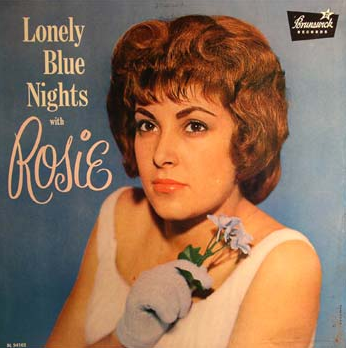
——————————————-
Rosie was born in Oregon, lived in Alaska and eventually settled in Southern California in 1956. She attended Granger Jr. High School in National City, California, and was active in the glee club. It seemed that there was always music or entertainment of some sort in the Hamlin household and Rosie was exposed to a variety of genres at an early age. Her Dad played guitar and her grandfather played banjo and harmonica. Her grandfather even had a _travelling medicine show_ complete with _Hamlin’s Snakebit Oil!_ Sometimes, Rosie would hide behind the couch so she could stay up and listen to them play, falling asleep to the sounds. One of her earliest memories was at the age of 4 standing on a box in her back yard pretending it was a stage and putting on a show.
When she was just 13, Rosie’s friend Alfred Barrett encouraged her to enter a talent show at their junior high school. While babysitting with a friend, Rosie spotted an ad in the paper for a group looking for a singer. She called them on the phone and they asked how old she was. Rosie told them she was 16 and she proceeded to sing Dark Moon over the phone. They liked what they heard and asked her to come to their rehearsal. She had to sneak out of the house under the guise of going to a babysitting job. When she got there, Rosie had the group thinking she was 16, partly because of some make-up she borrowed from her mother. She performed with the group and was a regular with them for a while at gigs in the San Diego area including the famous Bostonia Ballroom in El Cajon, California, which was her professional debut. _My legs were shaking,_ recalls Rosie.
That year, two important things happened that would change Rosie’s life forever. First, her mother bought her an old upright piano and her aunt began teaching her how to play it. She would play by-ear music she would hear on the radio. She learned old honky tonk, blues and boogie songs many of the _twelve-bar_ variety. Her uncle’s girlfriend later invited some other musicians over to the house to _jam._ These guys were David Ponci (guitar), Noah Tafolla (guitar) and Tony Gomez (bass). They would eventually become the Originals with two other guys joining in and Tafolla would later become her husband.
The other important thing that happened when Rosie was 14 was her putting down to paper the classic Angel Baby. It started out as a poem about a boyfriend written in her school notebook. Later, Rosie would add the melody for it. Rosie says that the melody was not, as some have reported, based on the song Heart and Soul, although Rosie acknowledges that it was probably influenced by a number of songs that she learned to play on the piano of the _Heart and Soul_ variety. Anticipating that it could be a special song, Rosie recalls that she mailed herself a copy via certified mail to prove the date that she created it. This would turn out to be an important decision later on when she needed to prove authorship.
After a few months of jamming together and playing some shows for friends at school, the Originals decided it was time to record. But rather than drive all the way to Los Angeles, the group decided to try a local recording shop in the rural desert community of San Marcos, California – about an hour’s drive away. They arrived at the place which turned out to be an abandoned airplane hanger! The owner was in the process of converting over from an airplane supply company and had airplane parts all over the place. In one corner, was his small, makeshift two-track studio. The group prepared to record. Only one problem – their sax player – Alfred Barrett hadn’t arrived. After calling Barrett, they learned he wouldn’t be joining them because he had to cut the grass at home! The group improvised. Noah taught the sax part to bass player Tony Gomez who had played some horn in school. The group then set off to record Angel Baby.
In all fairness, the setting wasn’t the greatest – an abandoned airplane hanger, a simple two-track machine, an inexperienced sax player and probably a nervous rest of the group. It took _all day_ recalls Rosie to get what the group thought was a decent version of the song. To listen to it now, it certainly wouldn’t win any awards for recording quality [he’s totally being kind…the instrumental break completely sucks! LOL! Listen to it! Now I understand how it got cut that way! – Paul]. But the record is so simple and innocently-beautiful that it actually matches the lyrics and melody. It actually works as-is. Had it been taken into a studio, recorded with high quality equipment and a professional orchestra, it may not have been a hit. It probably would have been _over produced_ like many records of the time and may have been overlooked. Instead, the record is so simple and sweet, it has a unique appeal.


